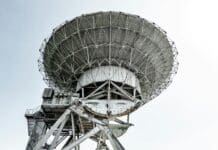This post is also available in:
 עברית (Hebrew)
עברית (Hebrew)
Researchers at the Indian Institute of Technology Bombay have made a breakthrough in enhancing the performance of bifacial perovskite solar cells (Bi-PSCs). Their study reveals that combining a rear-side albedo of 0.5 with a 20-degree tilt angle yields the highest efficiency, marking a step forward in the development of next-generation photovoltaic technology.
Bifacial perovskite solar cells are known for their potential to increase power generation and their versatility in applications such as building-integrated photovoltaics (BIPV) and multijunction solar cells. Unlike traditional monofacial cells, bifacial cells capture sunlight on both the front and rear sides, offering a significant efficiency boost, especially when positioned to maximize light reflection.
The researchers investigated the impact of tilt angle adjustments and rear-side albedo, with a focus on Lambertian reflection, which enhances light capture. Through detailed analysis, they identified key components of the solar cells, including the transparent back contact made from indium zinc oxide (IZO). This material is highly conductive, transparent, and supports efficient power conversion.
Their experiments revealed that, under standard 1 Sun AM1.5G front-side illumination, the bifacial perovskite solar cells achieved a power conversion efficiency of 17.46%. However, when the tilt angle was adjusted to 20 degrees, efficiency increased to 18.82%. Further enhancement was observed when the rear-side albedo was raised to 0.5 Sun, resulting in a remarkable 26% efficiency and a bifaciality factor of 89.3%.
To confirm these findings, SCAPS-1D simulations were conducted, validating the effects of Lambertian reflection and the synergistic impact of the tilt angle and albedo. The study also highlighted the cells’ excellent chemical durability and self-encapsulation properties, suggesting their potential for widespread adoption in both single-junction and tandem configurations.
This research paves the way for cost-effective and efficient bifacial perovskite solar cells, which could soon become a dominant technology in the photovoltaic industry, offering greater energy output and broader applications.


























